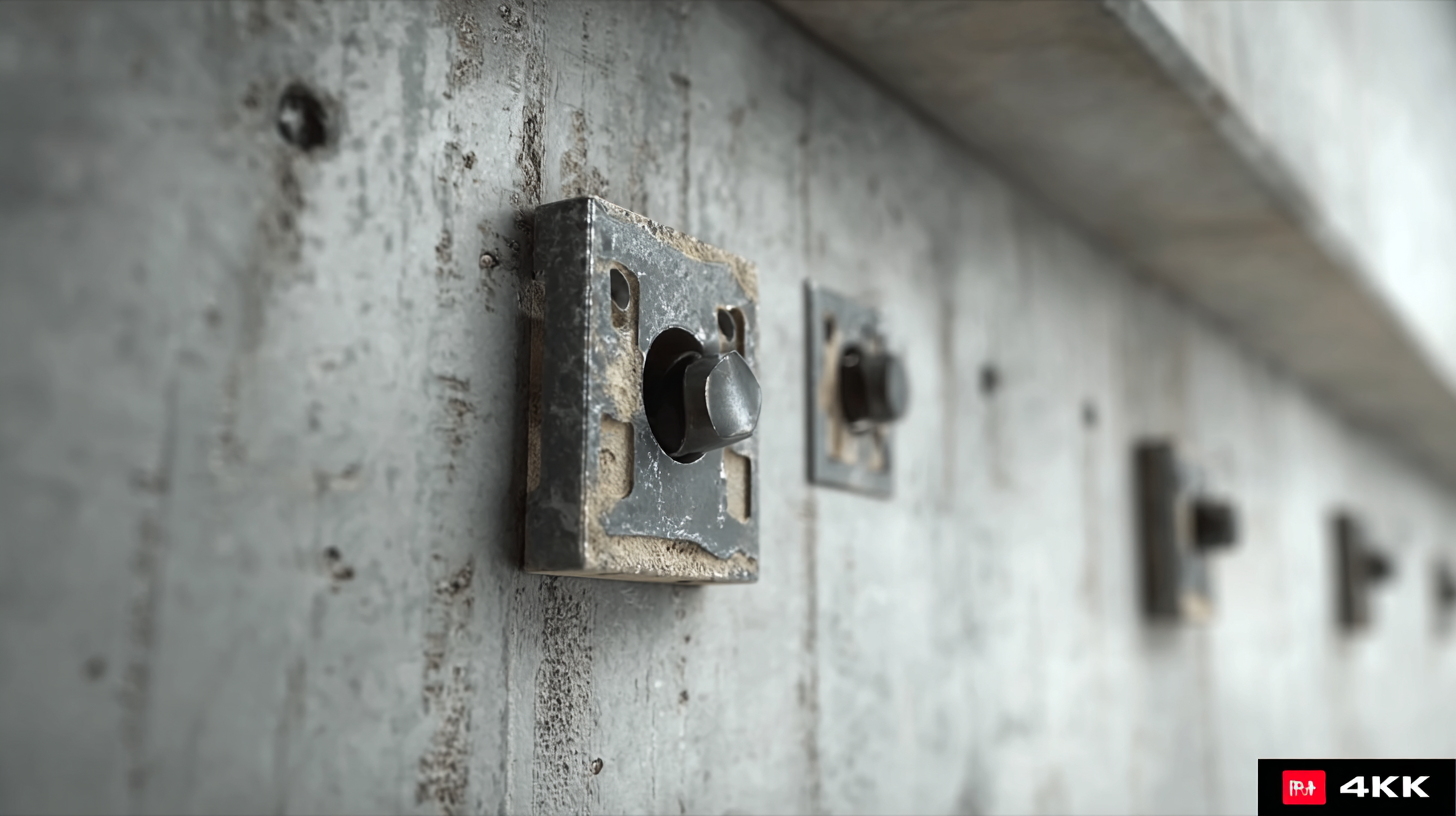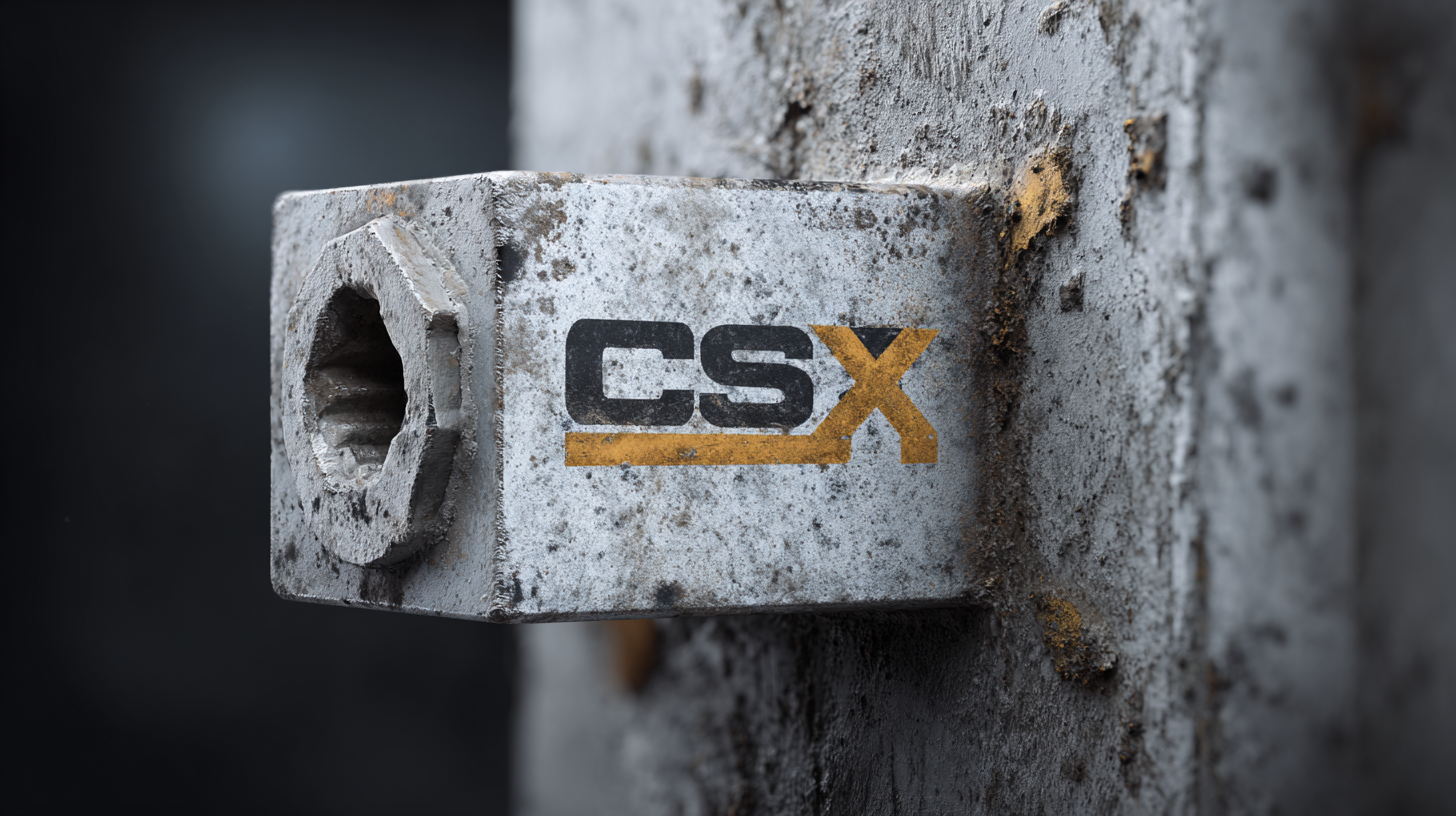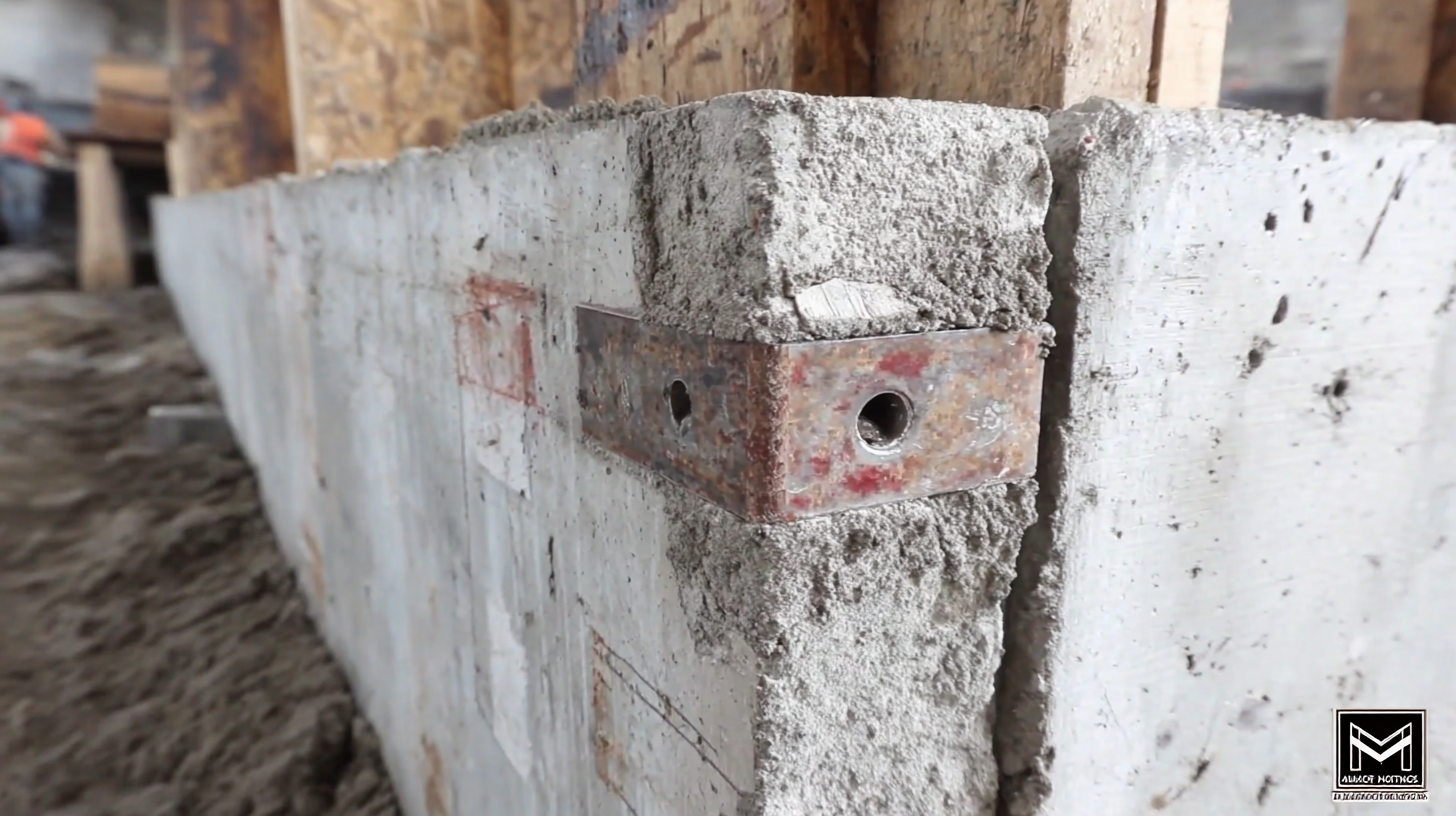In the construction industry, the choice of materials and fasteners plays a crucial role in ensuring the structural integrity and longevity of projects. Among these, Concrete Wall Anchors stand out as vital components that significantly enhance durability. According to a report from the American Concrete Institute, improper anchoring methods can lead to a 30% increase in maintenance costs and structural failures over time. This underlines the importance of selecting the right anchor system for concrete walls, as the right choice not only maximizes durability but also minimizes long-term service costs. By exploring the best types of Concrete Wall Anchors available on the market today, this blog aims to provide insights that can help professionals make informed decisions, ultimately leading to enhanced structural performance and cost savings.

When selecting concrete wall anchors, material choice plays a critical role in maximizing durability and performance. According to a report from the Concrete Reinforcing Steel Institute, the longevity of concrete structures can be significantly impacted by the quality of the materials used. For instance, high-strength steel anchors demonstrate superior resistance to corrosion and mechanical loads compared to their standard counterparts. This is particularly vital in environments where moisture and salt exposure can accelerate degradation, potentially reducing service life by over 50% if inferior materials are used.
Moreover, the American Concrete Institute emphasizes that the use of non-corrosive materials such as stainless steel or plastic composite anchors can enhance the overall durability of anchoring systems. In laboratory tests, anchors made from these materials have shown a 30% increase in lifespan compared to traditional options. Selecting the right materials not only extends the service life but also minimizes maintenance costs over time. This strategic choice can yield significant financial savings, making it essential for engineers and contractors to invest in high-quality concrete wall anchors to ensure long-lasting performance in their projects.

When selecting concrete wall anchors for projects focused on
durability and longevity, several key factors must be considered to ensure optimal performance.
Material composition is crucial; anchors made from higher-grade metals resistant to corrosion will
outperform standard options over time. Additionally, the design of the anchor matters significantly;
choosing a style that minimizes stress concentration will help maintain the structural integrity
of the wall and prolong the life of the installation.
Another critical factor is the load capacity of the anchor.
Understanding the weight and forces that the anchor will bear is essential for ensuring that it remains
securely fastened over the long term. Overloading an anchor can lead to failure, compromising both safety
and functionality. Furthermore, installation techniques should not be overlooked; improper
installation can lead to a reduction in the anchor's effectiveness, even if quality materials are used.
By focusing on these elements – material quality, load capacity, and proper installation – one can maximize
the durability of concrete wall anchors and positively impact long-term service costs.
When comparing the cost-effectiveness of traditional versus alternative wall anchors, it is essential to consider both upfront costs and long-term service expenses. According to a report by the American Concrete Institute, traditional concrete wall anchors, while reliable, often come with higher installation costs due to the necessary tools and labor. The average cost for traditional anchors can range from $1.50 to $3.00 per anchor, depending on the complexity of the installation.

In contrast, alternative wall anchors, such as epoxy or self-drilling types, tend to be more efficient in both installation and performance. A study by the Concrete Reinforcing Steel Institute indicates that these alternatives can reduce labor costs by up to 30% due to quicker installation times. Furthermore, the durability of alternative anchors results in fewer repairs, which can save an additional 15% in service costs over a five-year period. Ultimately, while traditional anchors might offer immediate familiarity and reliability, exploring innovative options could lead to substantial long-term savings and performance benefits.
When considering the durability of concrete wall anchors, environmental conditions play a pivotal role in determining both their lifespan and maintenance costs.Factors such as humidity, temperature fluctuations, and exposure to corrosive elements can significantly impact the integrity of these anchors over time. For instance, in coastal areas where saltwater is prevalent, the risk of corrosion can lead to faster deterioration, necessitating more frequent inspections and replacements.It is essential for engineers and construction professionals to take these environmental variables into account when selecting the appropriate anchor types and materials for a specific setting.
Moreover, proactive maintenance strategies can mitigate the adverse effects of environmental conditions on anchor durability. Regular inspections designed to assess the condition of anchors can catch potential issues early, thereby reducing long-term service costs. Implementing protective measures, such as coatings that guard against corrosion or using anchors made from rust-resistant materials, can also enhance longevity. By acknowledging the interplay between environmental conditions and anchor maintenance, professionals can effectively maximize the durability of concrete wall anchors while minimizing associated service costs.
When exploring the landscape of concrete wall anchors, the importance of data-driven insights cannot be overstated. Different anchor types demonstrate varying performance metrics which directly influence service costs. By analyzing the strengths and weaknesses of each anchor type, businesses can make informed decisions that optimize durability and minimize maintenance expenses. For instance, heavy-duty anchors may initially seem costly but prove to be more efficient over time due to reduced failure rates and repairs.
Moreover, these insights parallel trends observed in sectors such as retail and manufacturing, where organizational health and sector resilience are critical. Grocery-anchored centers are thriving in today's market, illustrating how foundational strengths can lead to sustained performance. Similarly, the construction industry benefits from leveraging data analytics to ascertain the best materials and methods, thereby enhancing overall service delivery and operational effectiveness. As companies focus on durability and reliability in their structural choices, they can achieve not only better financial outcomes but also contribute to a more sustainable future in construction practices.
| Anchor Type | Load Capacity (lbs) | Material | Corrosion Resistance | Installation Cost ($) | Average Lifespan (Years) | Maintenance Frequency (Years) |
|---|---|---|---|---|---|---|
| Expansion Anchor | 600 | Steel | Good | 150 | 10 | 5 |
| Concrete Screw | 400 | Zinc-Plated Steel | Moderate | 120 | 8 | 7 |
| Epoxy Anchor | 900 | Epoxy-Coated Steel | Excellent | 200 | 15 | 10 |
| Sleeve Anchor | 500 | Stainless Steel | Very Good | 130 | 12 | 6 |
